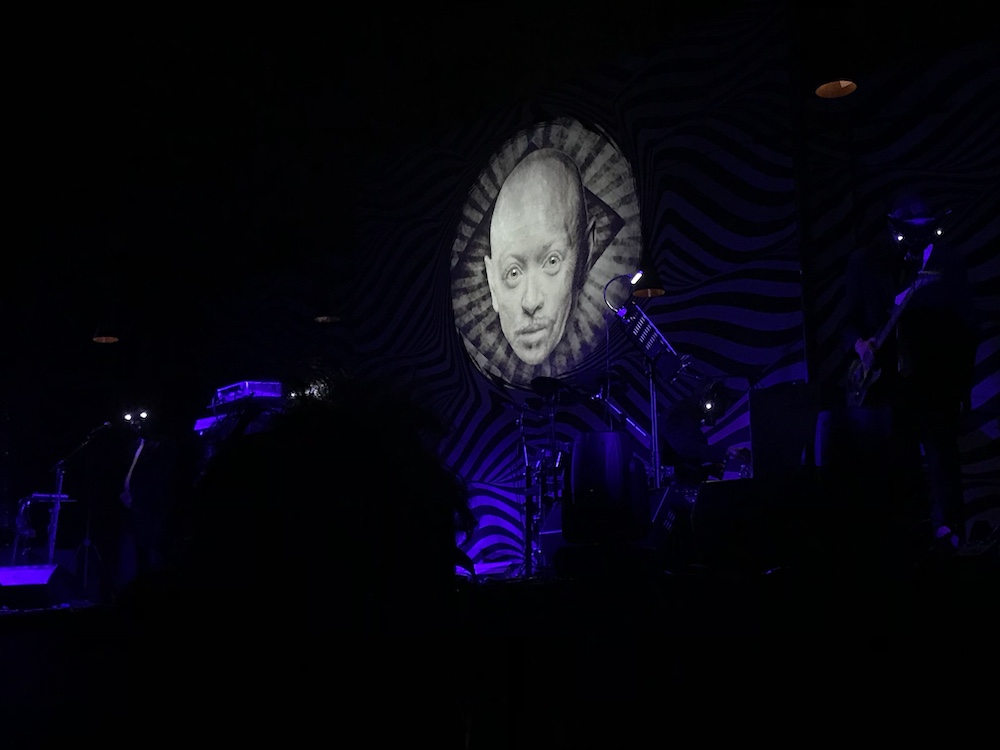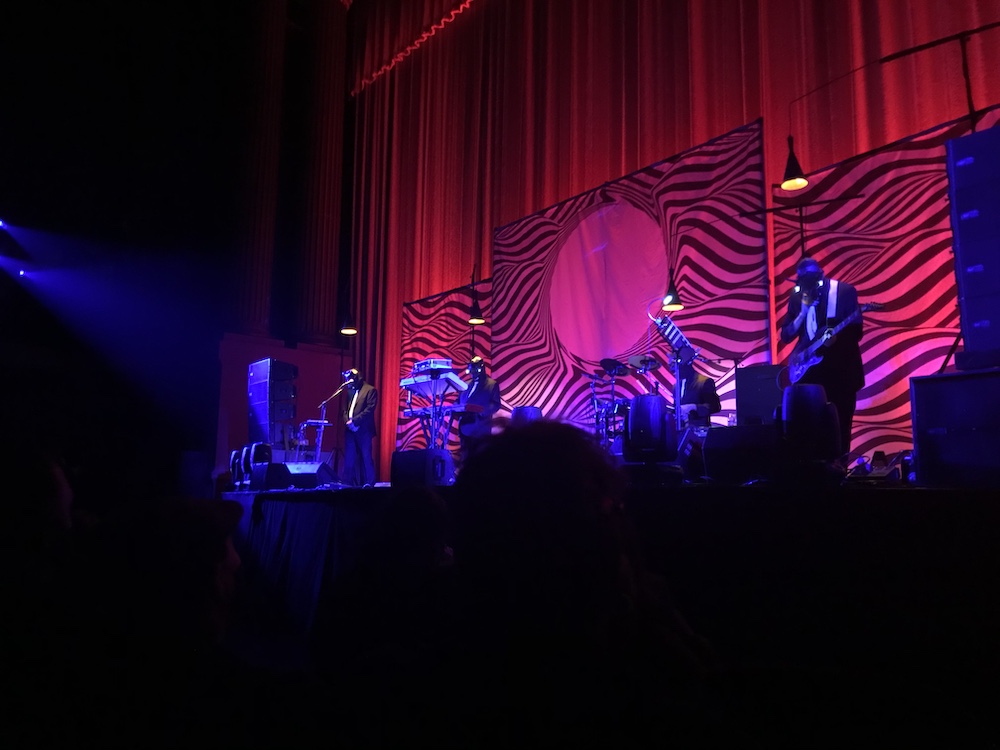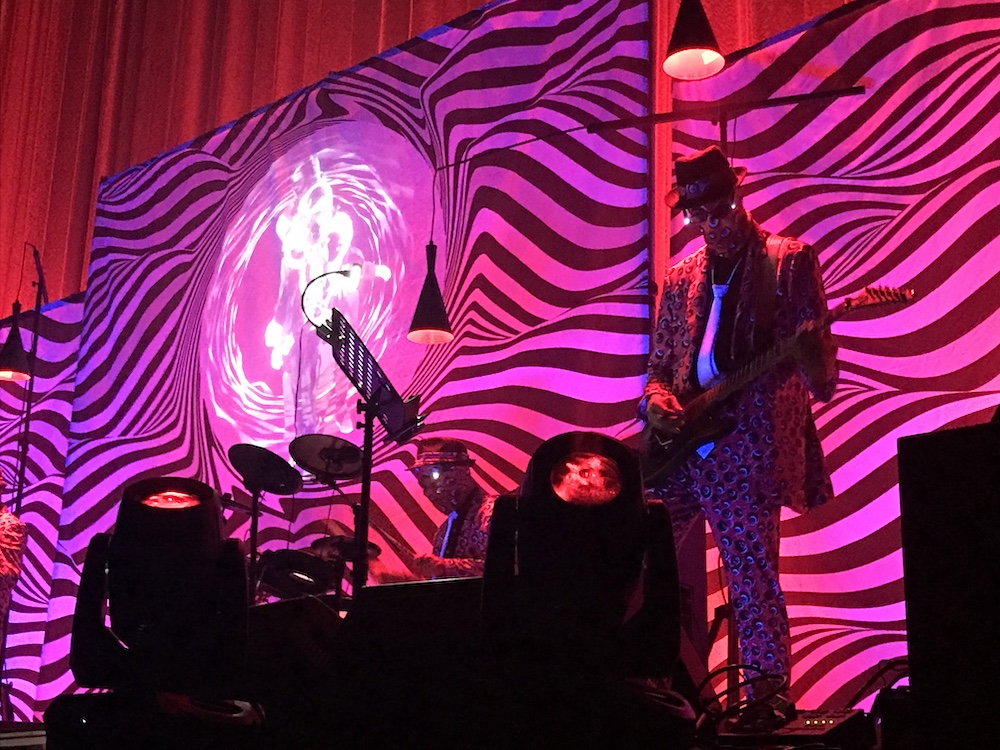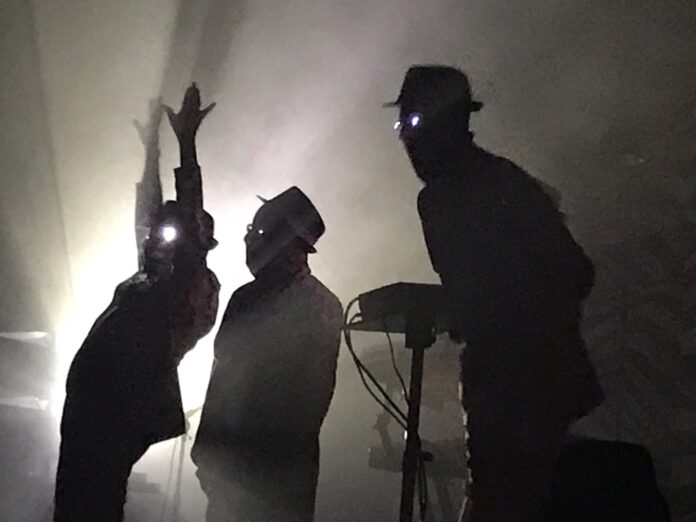What a way to get back inside the long-COVID-shuttered Castro Theater. The Residents are a long-running San Francisco institution; they’ve even outlasted Beach Blanket Babylon, although their shows were always rarer and harder to see. (Both do a great James Brown impression.) The revered foursome should have their own theater where they can show up every week with a new set of elaborate, identity-concealing masks and a new suite of synth-cabaret songs that squeak like perturbed mice. Instead, the anonymous multimedia collective commandeered the Castro for its 50th anniversary, having canceled most of its tour due to COVID concerns, and performed a set of new material followed by performances of some of its most beloved work.
Like most reopening venues, the Castro’s was a little awkward. When I went to the old Fillmore West for its reopening party in 2018, it hadn’t quite figured out how to transform itself from a Honda dealership to a venue, and the tech-house coming through that cavernous space’s sound system clattered coldly and indistinctly through the space. (The Castro will be hosting more live concerts in the coming months; its film schedule has yet to resume.) Likewise, it was pretty tough to make out what the head Resident was screaming about—let alone “Dyin’ Dog,” the fake bluesman the Residents made up for this year’s concept, and whose alleged “songs” make up the backbone of last year’s Metal, Meat, and Bone.

Dyin’ Dog’s head materialized on a circular screen-space behind the Residents, who were dressed in three-piece suits and light-up wolf masks. With his bugged-out eyeballs and shifting facial proportions, Dyin’ Dog looks a little like those disturbing rat-things from that Quizno’s ad that put a hex on my generation when we were kids. His speech was delivered in an electronically pitched-down, garbled voice whose accent would sound like minstrelsy if it didn’t so closely reflect the head Resident’s own. (The band was originally based in Shreveport, Louisiana.)
The character is a half-white, half-Black albino avatar who describes himself onstage as a “half-breed.” He found a private religion in the music of Howlin’ Wolf, and got his name when his dog was crushed by a hospital bed that fell from a truck driven by some college kids. I had to have this last point clarified for me in the press release given that his voice was so garbled that I only caught about 50 percent of the story.

The music during the first set was supposedly the Residents’ interpretations of the music of Dyin’ Dog, and it doesn’t have much to do with the blues. The drummer used their electronic kit to trigger samples more often than to play a beat, and in the absence of a bassist, the low end was taken up by a floor of vibrating synth noise. It was staid, stiff stuff, and I personally prefer the original Dyin’ Dog “demos” on the album, which in the annals of fake Black music by white musicians ranks somewhere between Marvin Pontiac and Ellis de Havilland.
The second set was a lot more lively. The circular screen-space this time around was occupied by videos from throughout the Residents’ career, including clips from their aborted black-and-white film Vileness Fats and some footage of puppets that looked like it’d been shot recently. The wolf masks remained, but this time they’d swapped out the suits for pajamas—if you looked closely, you could see these were adorned with the eyeball masks they’ve long since abandoned but that remain their most iconic image.

The material was from Duck Stab, their second-best album behind Mark of the Mole, which is actually having its 40th anniversary this month but maybe isn’t legendary enough to sell out the Castro. This stuff is groovier than the Dyin’ Dog material and has a real sense of atmosphere. The head Resident sang a lot more ebulliently than he did on the original Duck Stab, on which his voice resembled a cartoon rodent, but the chord progressions on songs like “Semolina” and “Hello Skinny” are as eerie as ever.
And then there was the material from 1976’s The Third Reich ’n’ Roll. Yes, The Third Reich ’n’ Roll, their second album: two suites of impressionistic covers of ‘50s and ‘60s rock ’n’ roll classics, the sleeve charmingly adorned with a cutout of Dick Clark in Nazi regalia. One of their most influential albums and widely cited as their best, it’s an early example of the mashup and may be the first record ever to use a James Brown sample.

“The Nazi references and swastikas were a problem all through the album’s history,” the press release tells us. Guess what: they’re still a problem. The Residents are usually apolitical, and if there’s an agenda to their work it’s buried under all the makeup. This makes them a little more tolerable than most artists who use the dark-carnival aesthetic, which tends to go hand-in-hand with libertarianism of the most rancid kind. Apparently, the idea behind The Third Reich ’n’ Roll is that rock ’n’ roll is brainwashing the kids just like dictatorial groupthink, but that hasn’t been true since the mid-2000s, and is that really enough of a conceit to justify playing around with Nazi iconography?
The first swastika to show up onscreen was crushed between two rocks, which was a relief. The second one dissolved into jagged squiggles, like a piece of paper being crumpled up, but those squiggles remained on the screen. Please don’t reassemble back into a swastika, I found myself thinking. It did. I don’t think the Residents are Nazis, and everyone from Siouxsie to KISS to Throbbing Gristle was using Nazi imagery in the ’70s, but it was irresponsible then and irresponsible now. Like blackface, the image of a swastika is simply too jarring to contribute meaningfully to any agenda.
Ignoring the screen and focusing on the musicians, I was struck by the resemblance of their performance to what I saw Animal Collective do live when I caught them back in 2016. It’s almost unbelievable that the Third Reich ’n’ Roll material is nearly five decades old, it sounds so much like the abstract and sample-based music of alchemists like AnCo, the KLF, the aforementioned Throbbing Gristle and their kinkier progeny Coil, Matmos, DJ Shadow, and even the 2000s mashup movement that gave us Girl Talk and DJ/rupture.
Maybe there’s some influence there, but more likely the Residents predicted these artists just by existing in an island of weirdness apart from any musical lineage, besides what they could pervert. Fifty years later they’re still on that island, for better or worse.





